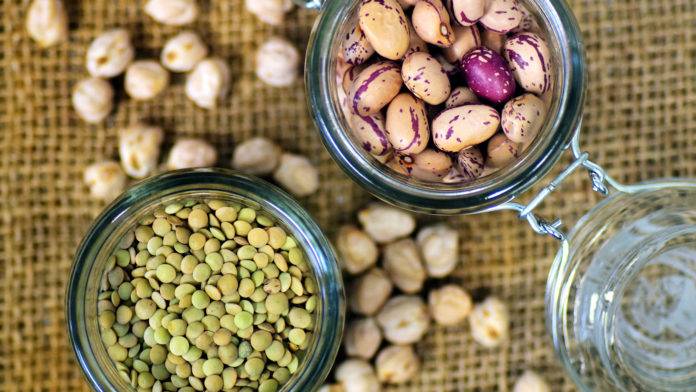There’s a growing appetite for plant-based proteins, and Canada is a leader in the international market.
Pulses — the dried seeds of plants from the legume family, like chickpeas, beans, and lentils — are high-fibre and high-protein foods. They’re also packed with nutrition and boast a low glycemic index. Pulses can be eaten whole, but they can also be processed to add value; they are easily ground into flours, or even separated to obtain plant-based protein.
And cultivating pulses even gives back by enhancing the soil where they grow; they grow well on marginalized land and add nitrogen to the soil, increasing yields for future crops. Canada is already a leading global exporter, and 90 percent of its crops are grown in Saskatchewan.
Protein Industries Canada supercluster (PIC) one of five national research groups established in 2018 as part of the federal Innovation Superclusters Initiative. In addition to federal funding, every government dollar is matched by industry. PIC includes over 120 organizations, including the University of Saskatchewan.
This unprecedented level of funding will help PIC towards its four pillars of development: create, grow, make, and market. This will build skills, infrastructure, and jobs locally, and provide healthy, minimally-processed staple foods globally. Combined with grains, they would provide complete protein for a plant-based diet.
PIC aims to tackle many areas that will add value to the pulses grown in Canada. Their research includes plant breeding and genomics to provide better yields, crop processing to increase value in the market, and improved traceability so that consumers know exactly what they’re eating.
Notably, PIC’s breeding program doesn’t include any genetic modification. Through trait, breeding, and agronomy programs, they are improving yield and water efficiency, as well as boosting drought and disease resistance. They’re also studying the quality of the protein produced, including amino acid composition and protein digestibility.
After harvest, PIC is finding ways to process the crop, which includes separating out protein. But despite the high-protein nature of pulses, that still only makes up 20-30 percent of the raw material, opening the door to other high-value co-products like plant-based starch and fibre.
All of this is important to the changing needs of our planet. People are looking for ways to eat more ethical diets. That can include eating less meat or eating local to lower the carbon footprint of our foods or to support animal welfare. There’s also the question of more responsible agriculture that gives more land back to natural habitats. Mounting evidence also points to plant-based proteins being better for human health.
Canadian-grown pulses will contribute to all of these goals and make a positive impact worldwide.








































